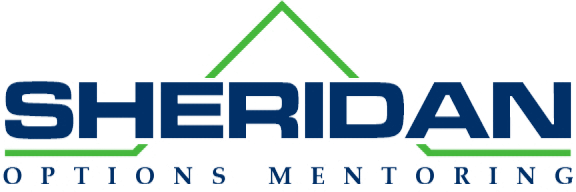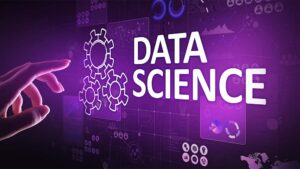Data science is the science of taking raw data as an input and extracting knowledge and insights from it.
The main goal of “R for data science” is to assist you in learning the most important R tools that will enable you to perform data science.
R is a widely used statistical software and data analysis tool that is written in an open-source programming language. R is a crucial tool for data scientists.
It is extremely popular, and many statisticians and data scientists like it.
But what is it about R that makes it so popular?
Why and how should you utilize R in your data science projects?
Online Course R Statistics: Statistics with R » finnstats
R Programming Language for Data Science
Data Science is the most popular field in the twenty-first century. It’s because there’s a compelling need to evaluate the data and derive insights from it.
To accomplish so, several crucial technologies must be used to churn the raw data. R is a programming language that provides a powerful environment for researching, processing, transforming, and visualizing data.
R’s Features – Data Science
R has a number of useful capabilities for data science applications, including:
R has a lot of options for statistical modeling.
Because it has beautiful visualization features, R is a good fit for a variety of data science applications.
R is widely used in ETL applications in data science (Extract, Transform, Load). It has a user interface for a variety of databases, including SQL and spreadsheets.
R also comes with a number of useful data manipulation packages.
Data scientists can use R to use machine learning algorithms to predict future events.
R’s ability to interact with NoSQL databases and analyze unstructured data is one of its most useful features.
What is the difference between programming in R and Python?
R is a statistical programming language and environment that integrates statistical computing and graphics.
Python is a computer language that can be used for data analysis and scientific computing.
R provides a lot of useful capabilities for statistical analysis and visualization.
Python can be used to create graphical user interfaces, online applications, and embedded systems.
R has a plethora of easy-to-use tools for completing tasks.
Python can easily compute matrices and make optimizations.
NLP Courses Online (Natural Language Processing) » finnstats
Rstudio, RKward, R commander, and other popular R IDEs.
Spyder, Eclipse+Pydev, Atom, and other popular Python IDEs.
Many packages and libraries, such as ggplot2, caret, and others, are accessible in R.
Pandas, Numpy, Scipy are Python key packages.
R is mostly used in data science for complicated data analysis.
For data science applications, Python takes a more streamlined approach.
R Libraries’ Most Common Data Science
dplyr: We utilize the dplyr tool to perform data wrangling and analysis. We utilize this package to make many functions for the Data frame in R easier to use.
You may be required to:
Choose a few data columns to work with, Select certain rows by filtering your data, Sort the rows of your data into a logical order, make changes to your data frame to include new columns and in some way, summarise sections of your data.
ggplot2: R’s visualization library ggplot2 is well-known. It offers a visually appealing mix of graphics that are also interactive.
By describing links between data properties and their graphical representation, this technique provides a consistent way to create visualizations.
Reinforcement Learning in Machine Learning » finnstats
Esquisse: The most essential Tableau feature has been introduced to R with this package. Simply drag and drop to complete your visualization in minutes.
This is actually a ggplot2 enhancement. It allows us to create bar graphs, curves, scatter plots, and histograms, as well as export and retrieve the code that generated the graph.
tidyr: Tidyr is a package that we use to clean and tidy our data. When each variable represents a column and each row represents an observation, we consider this data to be tidy.
Shiny is an R package that is well-known.
You may use shiny to share your content with others and make it easier for them to understand and explore it visually. It’s the best friend of a Data Scientist.
Classification and regression training is abbreviated as caret. You can simulate complex regression and classification problems with this function.
e1071: Clustering, Fourier Transform, Naive Bayes, SVM, and other types of miscellaneous functions are all implemented using this package.
Cluster Sampling in R With Examples » finnstats
mlr: When it comes to conducting machine learning tasks, this package is truly fantastic. It almost has all of the necessary and relevant algorithms for machine learning jobs.
Extensible framework for classification, regression, clustering, multi-classification and survival analysis is another name for it.
Some important R libraries are
lubridate, Knitr, DT(DataTables), RCrawler, Leaflet, Janitor, Plotly
Bias Variance Tradeoff Machine Learning Tutorial » finnstats
Conclusion
R is a programming language that was built from the ground up for data analysis and interpretation. In the modern economy, data, as is accurately remarked, represents power.
However, in order to harness the power of raw data, we’ll need the right tools. This capability is provided by R programming for data science.
R is the language of choice for data scientists, with an ever-growing user community and an ever-expanding package list encompassing all aspects of data science.
Visit FINNSTATS for additional insight on this topic: https://finnstats.com/index.php/2022/02/26/r-programming-for-data-science/.
Disclosure: Interactive Brokers
Information posted on IBKR Campus that is provided by third-parties does NOT constitute a recommendation that you should contract for the services of that third party. Third-party participants who contribute to IBKR Campus are independent of Interactive Brokers and Interactive Brokers does not make any representations or warranties concerning the services offered, their past or future performance, or the accuracy of the information provided by the third party. Past performance is no guarantee of future results.
This material is from FINNSTATS and is being posted with its permission. The views expressed in this material are solely those of the author and/or FINNSTATS and Interactive Brokers is not endorsing or recommending any investment or trading discussed in the material. This material is not and should not be construed as an offer to buy or sell any security. It should not be construed as research or investment advice or a recommendation to buy, sell or hold any security or commodity. This material does not and is not intended to take into account the particular financial conditions, investment objectives or requirements of individual customers. Before acting on this material, you should consider whether it is suitable for your particular circumstances and, as necessary, seek professional advice.

















